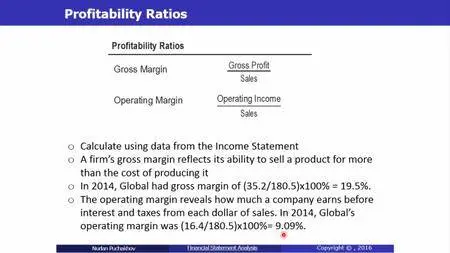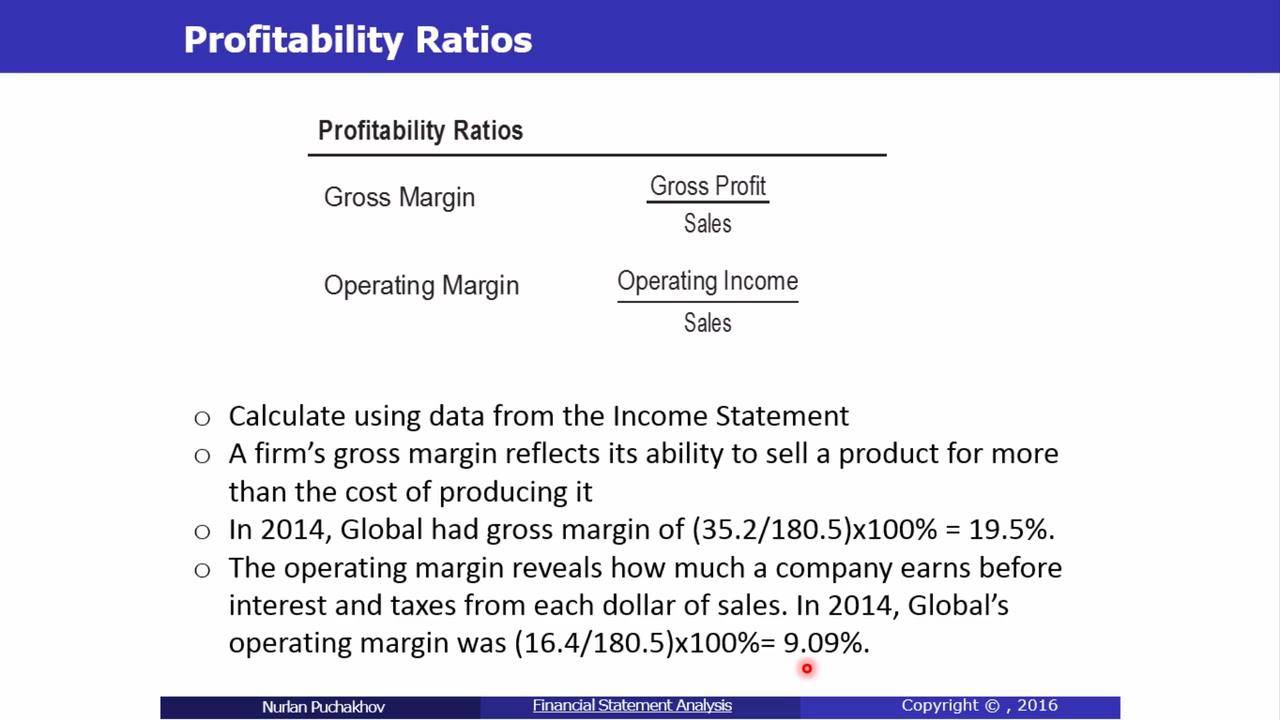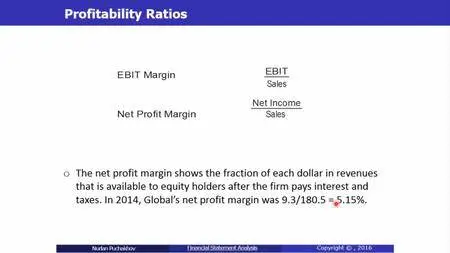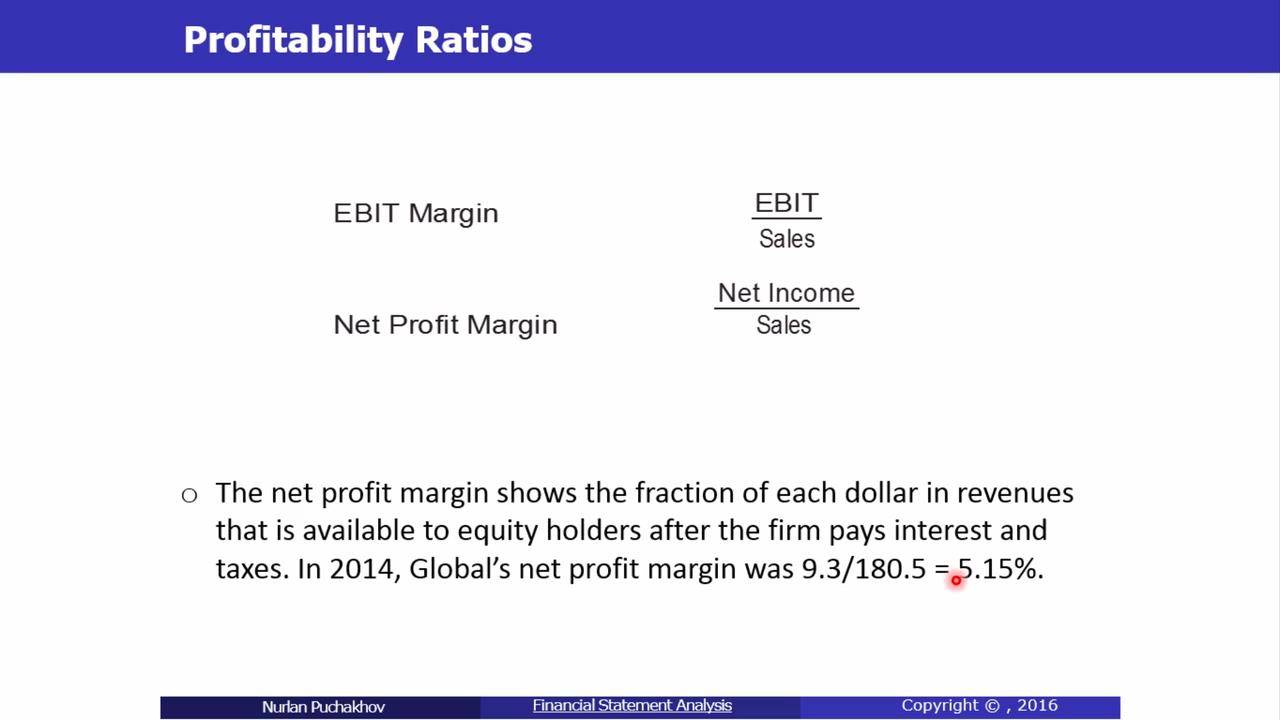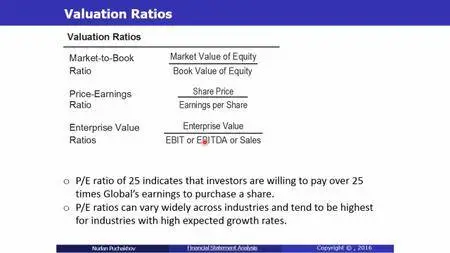Introduction to Financial Statement Analysis
English | 2016 | mp4 | H264 1280x720 | AAC 2 ch | 1.5 hrs | 170 MB
eLearning, Business, Finance | Skill level: Beginner level
English | 2016 | mp4 | H264 1280x720 | AAC 2 ch | 1.5 hrs | 170 MB
eLearning, Business, Finance | Skill level: Beginner level
Learn how to analyse financial statements through comprehensive example of a company
Financial Statement Analysis topic is in the curriculum of students studying accounting, finance or business related subjects at the top Universities in the world. This emphasizes the importance of this subject as a foundation of financial knowledge. While this topic is very broad and whole textbooks are dedicated to this subject, this course focuses only on the things that the students with beginner level knowledge need to know. This makes the course easy to follow, saves you time, and prevents you from being lost in the complicated data.
After completion of this course, you will have a solid understanding of financial statements, and be able to use the data contained in these statements to evaluate the performance of the firm. Who knows maybe you will become a successful investor, an entrepreneur, a finance analyst, an accountant or an auditor in the future? Then, there is no way to avoid this subject and you need to start by learning basics first.
The course is structured so that you will move up the ladder of necessary topics. First, the course builds your foundation on main financial statements: The Balance Sheet, The Income Statement, The Cash Flow Statement and The Statement of Stakeholder’s Equity. Then, in the second part, it shows how to extract more information from these financial statements using Ratio Analysis. It covers main ratios such as Profitability (Gross Margin, Operating Margin, EBIT Margin and Net Profit Margin), Liquidity (Current Ratio, Quick Ratio, and Cash Ratio), Working capital ratios (Accounts Receivable Days, Accounts Receivable Turnover, Accounts Payable Days and Accounts Payable Turnover, Inventory Days and Inventory Turnover ratios), Interest coverage, Leverage, Valuation ratios (Market-to-Book ratio, Price-Earning ratio and Enterprise Value), Operating returns ratios (Asset Turnover, Return on Equity, Return on Assets, Return on Invested Capital) and shows how to calculate them and how to use them to interpret financial results. We will also discuss main factors to consider before making any decisions about the performance. All these topics are explained through a comprehensive example of a fictitious company that I have created to make it easier for you to understand and remember. Also, you will get a full summary of the ratios and their interpretation which will make it easier for you to learn from a single source. Finally, you will get a total of 40 multiple choice questions designed by me to test your knowledge on covered material.
I guarantee that this course will always be up to date.
Finally, this course comes with Udemy’s 30-day unconditional full money back guarantee. If you are not satisfied with the course, you can claim your money back with a simple push of a button at no risk to you.
As always, I am here to help you with any questions that you have or concepts that are difficult to understand. Feel free to contact me via discussion forum or private message. I am more than happy to provide my support and you will receive an answer within 24 hours.
What are the requirements?
- This is an introductory course and no prior knowledge of accounting or finance is required.
- All the materials will be provided (including lectures, readings, exercises, and exams)
- Students will need just a notebook, pen and calculator
What am I going to get from this course?
- Over 25 lectures and 1.5 hours of content!
- Understand the Balance Sheet and its components
- Understand the Income Statement and its components
- Understand the Cash Flow Statement and its components
- Understand the Statement of Stakeholder’s Equity and other financial statement information
- Calculate and interpret profitability ratios
- Calculate and interpret liquidity ratios
- Calculate and interpret working capital ratios
- Calculate and interpret interest coverage and leverage ratios
- Calculate and interpret valuation ratios
- Calculate and interpret operating returns ratios
What is the target audience?
- Accounting and Finance students
- Students with non-finance or non-accounting degrees who are interested in the topic
- Non-specialists interested in the subject
- Anyone who wants to be familiar with the company’s financial reports and their interpretation
- This course is for beginners and is NOT for those who already have deep accounting and financial statements analysis knowledge
Screenshots:




